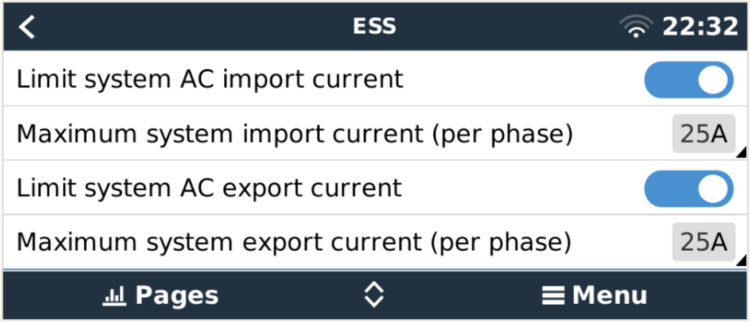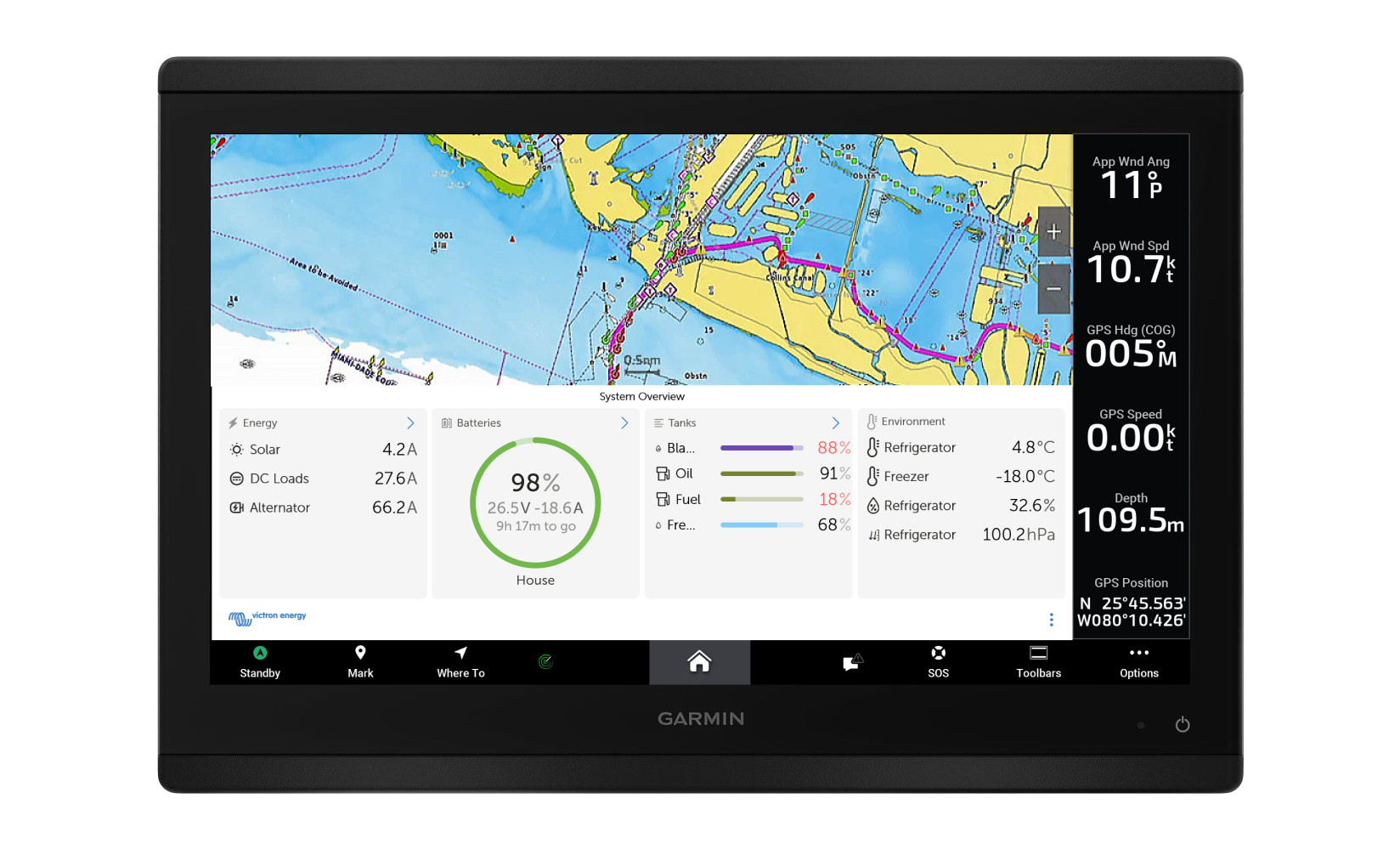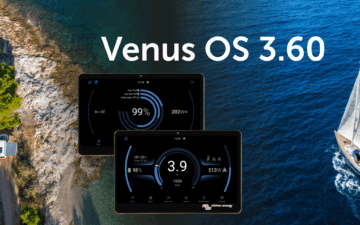
Today we’re releasing version 3.30 of Venus OS, the software on our GX monitoring product range such as the Cerbo GX, and the recently launched Ekrano GX.
Let’s get into the highlights:
ESS Peak shaving
A while ago, we added peak shaving for ESS systems built without an Energy Meter. Today we add the same, but then for ESS systems that do include an energy meter.
There are two new AC current-limit settings, and those limits will apply to the complete system. Therefore they now include any high-power loads which are usually installed in parallel to the inverter/charger system such as EV Chargers and Heat pumps.
How does it work?
The system monitors the current at the meter, and when needed engages to keep that within the configured limits:
- to prevent overcurrent during export, system limits solar production and battery discharge.
- to prevent overcurrent during import, system limits battery charging.
- to prevent overcurrent during import because of loads, system will assist using battery power. (As long as battery permits this, of course).
- when the SOC has dropped more than 5% below the configured ESS minimum SOC, the battery will be recharged from the grid as soon as the loads drop sufficiently to allow for charging.
Requirements and other details
- The feature is part of ESS; and applies to MultiPlus, Quattro, MultiPlus-II and EasySolar inverter/chargers. The Multi RS will have the same feature when we release Energy Meter and ESS support for that, but that’s a different project and implementation.
- The inverter/chargers require an updated ESS Assistant – for which you’ll need VEConfigure. The required version of the ESS Assistant is 018C. Note that this software configuration change requires a trained installer. Making such changes is not for end-users
- About the existing “Limit system feed-in” option in the ESS menu, in watts: if you have both set, the lower of the two is followed for feeding in DC-coupled PV.
- The GX does not limit PV-inverters in relation to the new export current-limit. To illustrate: in case of major solar production, at the same time as a high-tariff for selling energy to the utility, the new mechanism will limit feed-in power from the battery to zero. So, as long as the installed PV Inverter system is configured in such a way that it can’t by itself blow the fuse – then it’s fine.
- The feature works with all ESS supported energy meters.
Three phase operation details
- When the import/export limit is not being exceeded on any phase, the system operates normally, according to the “Multiphase regulation” setting.
- If the current-limit is exceeded on any one phase, in either direction, power will be moved to other phases in equal measures.
- If all phases are maxed-out and more power is needed to run the loads without exceeding the BMS limits, all phases are overloaded equally – resulting in the lowest probability of tripping a breaker or blowing a fuse.
- Power will be passed through the DC bus to accomplish this goal, even if Multiphase regulation is set to “total of phases”.
Comparison of the two features
It’s important to understand when to use which AC current-limit settings:
- ESS systems with an energy meter: use the new feature as explained in this post.
- ESS systems without an energy meter: use the settings explained in the v3.00 release blog. This includes systems using our AC current sensors that plug directly into the inverter/charger.
Marine MFD App improvements
Last month, we launched the renewed Marine MFD App, with a complete new look as well as various new features:
This release includes various improvements, and one very welcome one – at least for me when sailing – is the improved load time. When clicking the Victron icon, the app now loads much faster.
Generator start/stop controller integration
DSE: Add support for the SE 8620-MKII and the DSE 6120 models
ComAp: Fix coolant temperature and oil pressure register decimals
How to install and complete change log
Aside from the above highlighted explanations, there are additional improvements and changes. To read the details, see the full change log by logging into Victron Professional and selecting ‘Firmware’ -> ‘Venus OS’ -> ‘firmware changelog’.
Information about how to install the firmware is in the manual of your GX Device. Quick links to the relevant pages can be found here: Ekrano GX, Cerbo GX, Color Control GX and for the Venus GX.













 #victronenergy #adventure
#victronenergy #adventure
 ELECTRICS
ELECTRICS 
